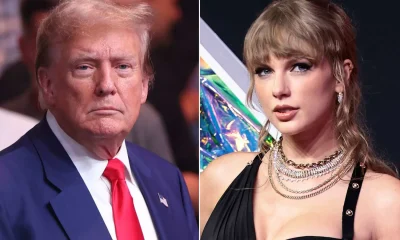
Foreign
Harris Picks Walz as VP for US 2024 Election

Kamala Harris Has Unveiled Game-Changing VP Choice Tim Walz For US 2024 Election
(iexclusivenews) – In a groundbreaking move that has sent shockwaves through the political landscape, Democratic presidential candidate Kamala Harris has selected Minnesota Governor Tim Walz as her vice-presidential running mate for the upcoming November 5 United States election.
This strategic decision, set to be officially announced later today, has already ignited intense speculation and analysis among political pundits and voters alike.

Tim Walz, A Rising Star in the Democratic Party
Governor Tim Walz, a 60-year-old political veteran with a diverse background, brings a wealth of experience and appeal to the Harris campaign.
His journey from U.S. Army National Guard member to educator, and eventually to public servant, exemplifies the American dream that resonates with many voters.
Military Service and Educational Background
Walz’s military service in the National Guard has earned him respect across party lines, while his experience as a teacher provides him with unique insights into the challenges facing America’s education system.

This combination of military and educational experience positions Walz as a well-rounded candidate who can speak to a wide range of voter concerns.
RELATED: Activists Criticize Shapiro and Kelly as Harris Nears VP Decision
US Election 2024: Cardi B Backs Kamala Harris for President
Congressional Legacy and Gubernatorial Achievements
During his 12-year tenure in Congress from 2006 to 2018, Walz established himself as a pragmatic legislator capable of working across the aisle.
As Governor of Minnesota since 2018, he has championed a series of progressive policies that have garnered national attention:
1.Free school meals program
2.Robust climate change initiatives
3.Middle-class tax cuts
4.Expanded paid leave policies
These initiatives demonstrate Walz’s commitment to addressing pressing issues that affect everyday Americans, from education and the environment to economic relief and work-life balance.
The Strategic Calculus Behind Harris’s Choice
Kamala Harris, herself a trailblazer as the daughter of immigrants from Jamaica and India, has made a calculated decision in selecting Walz as her running mate.
This choice reflects a multi-faceted strategy aimed at strengthening the Democratic ticket’s appeal across various demographics and regions.
By choosing a Midwestern governor, Harris aims to bolster her campaign’s presence in crucial battleground states.
Walz’s popularity in Minnesota and his potential to resonate with voters in neighboring states could prove pivotal in securing electoral votes in hotly contested regions.
Progressive Credentials Meet Centrist Appeal
Walz’s track record of implementing progressive policies while maintaining appeal to centrist voters aligns well with Harris’s vision for a broad coalition.
This balance could be key in uniting different factions within the Democratic Party and attracting independent voters.
The selection of Walz comes as a surprise to many who expected Harris to choose either Pennsylvania Governor Josh Shapiro or Arizona Senator Mark Kelly.
While both were considered strong contenders, Walz’s selection suggests a strategy that prioritizes Midwest appeal and a fresh perspective on the national stage.
The Road Ahead for Harris-Walz 2024
With President Joe Biden’s unexpected withdrawal from the re-election race last month, Kamala Harris has swiftly consolidated her position as the Democratic frontrunner.
Her campaign has demonstrated impressive fundraising capabilities and garnered substantial party support.
The newly formed Harris-Walz ticket is set to make its debut at a highly anticipated event in Philadelphia this evening.
This public appearance will offer voters their first glimpse of the duo’s chemistry and campaign messaging, setting the tone for what promises to be an intense and closely watched election season.
As the 2024 presidential race heats up, the Harris-Walz ticket represents a bold new direction for the Democratic Party, blending diverse backgrounds, progressive policies, and strategic regional appeal.
Only time will tell how this dynamic pairing will resonate with the American electorate, but one thing is certain: the race for the White House has just become even more intriguing.
























